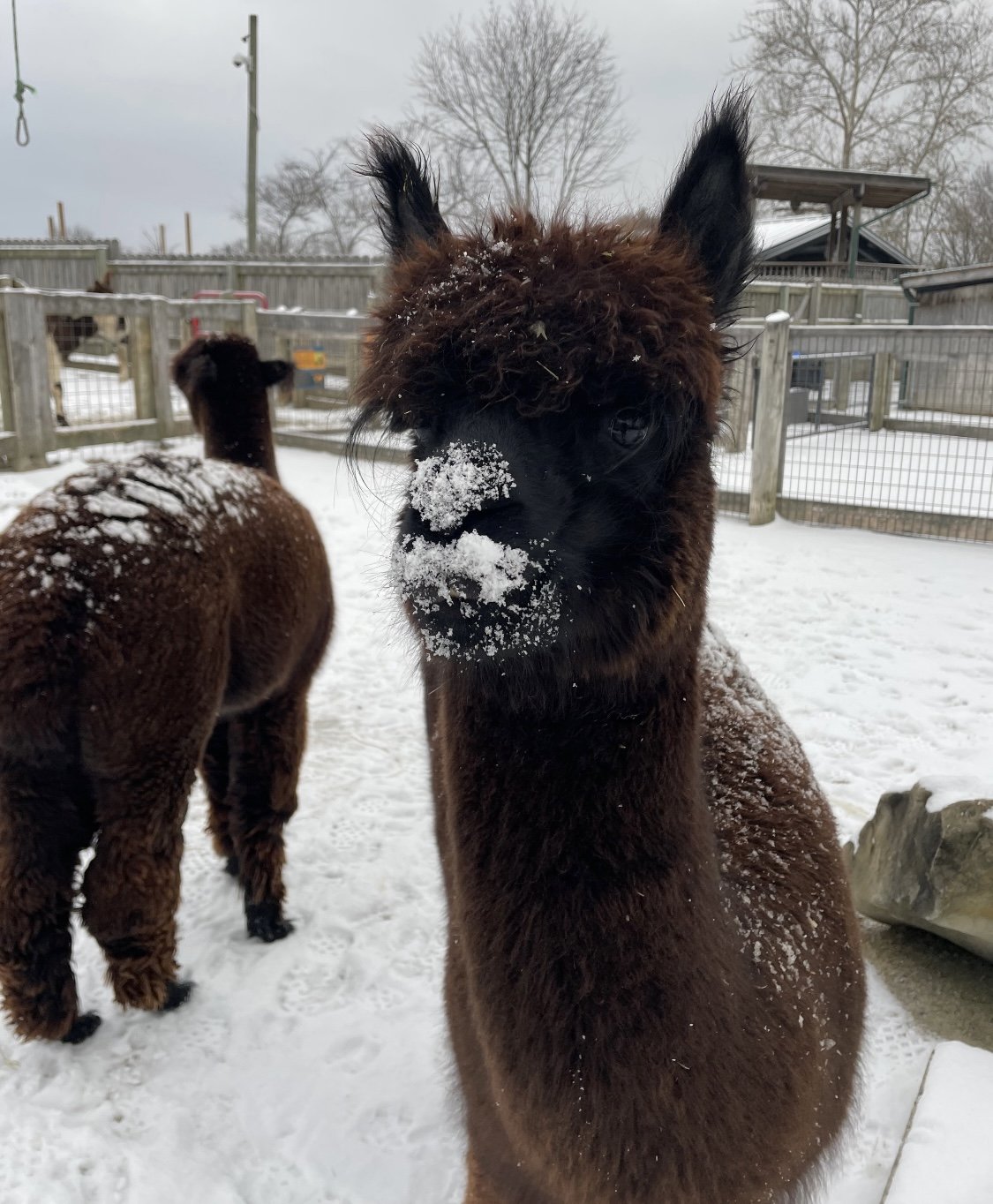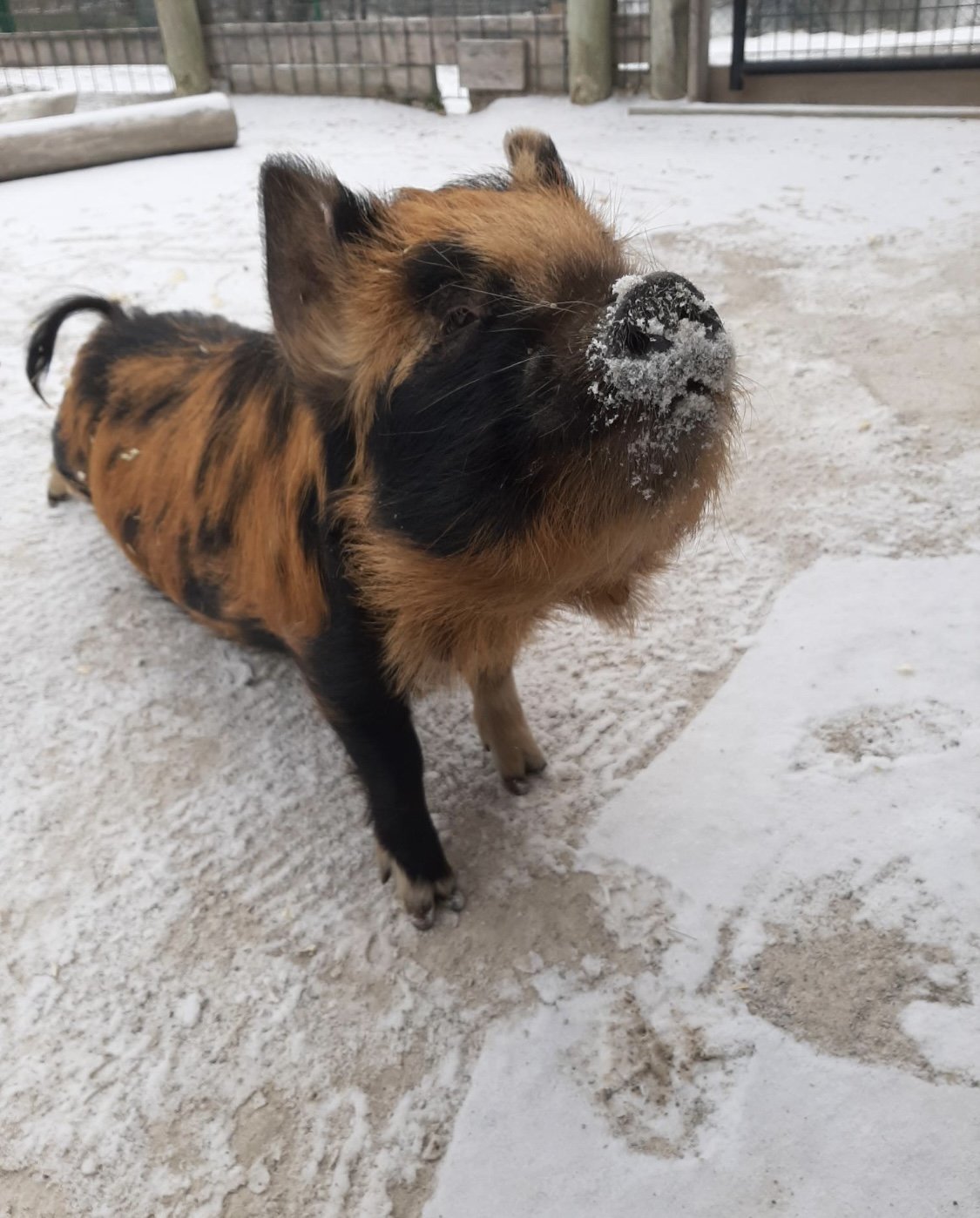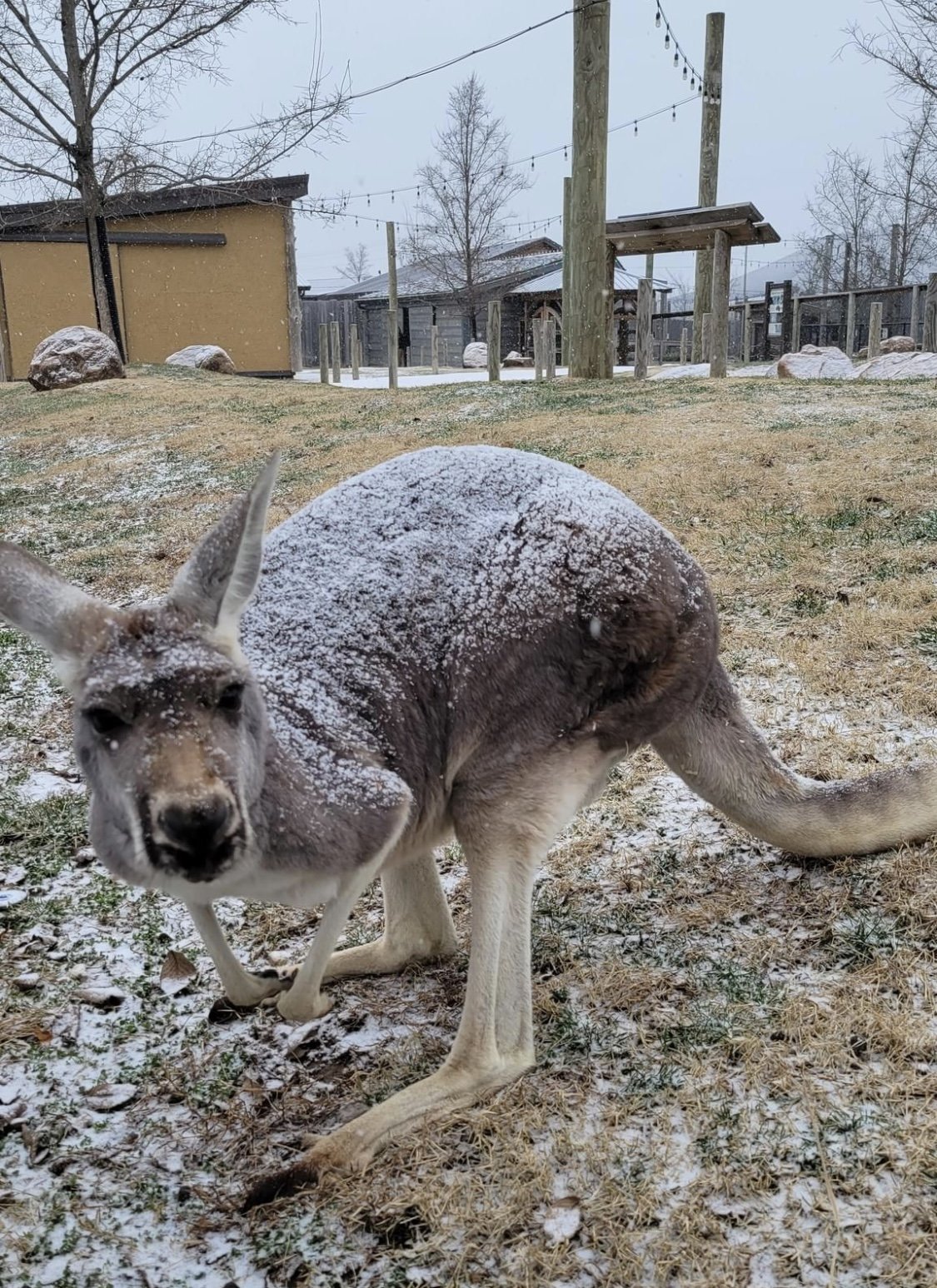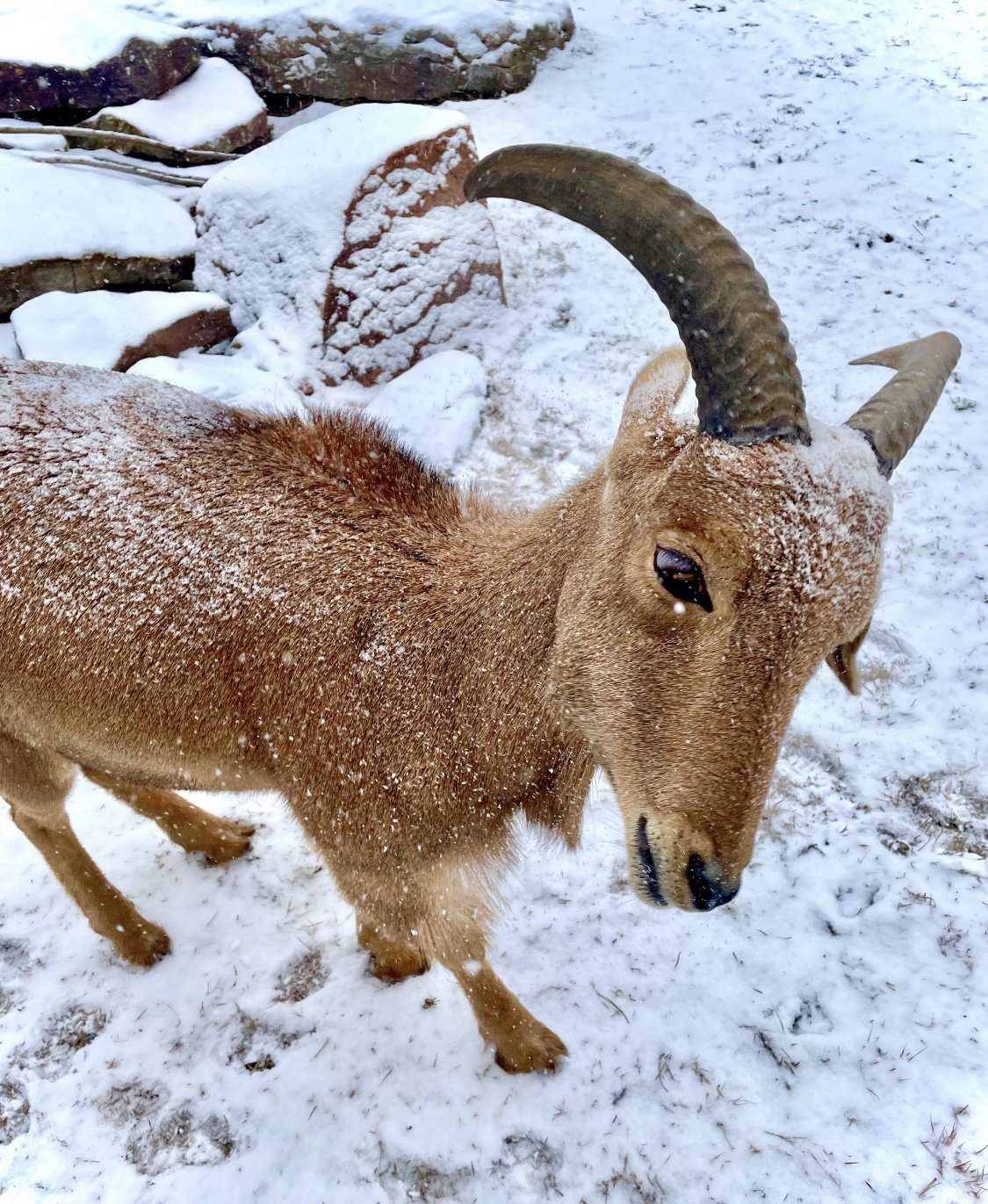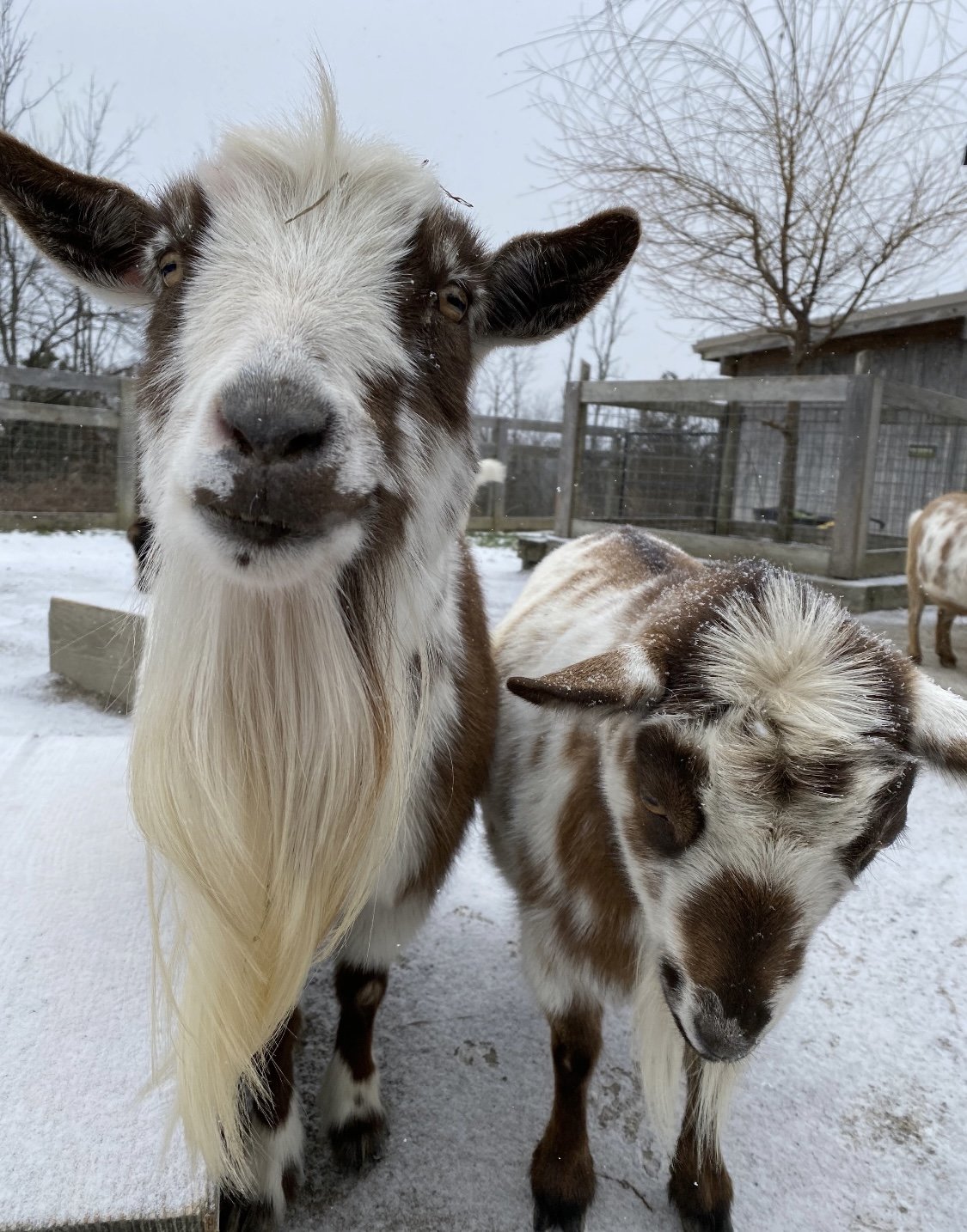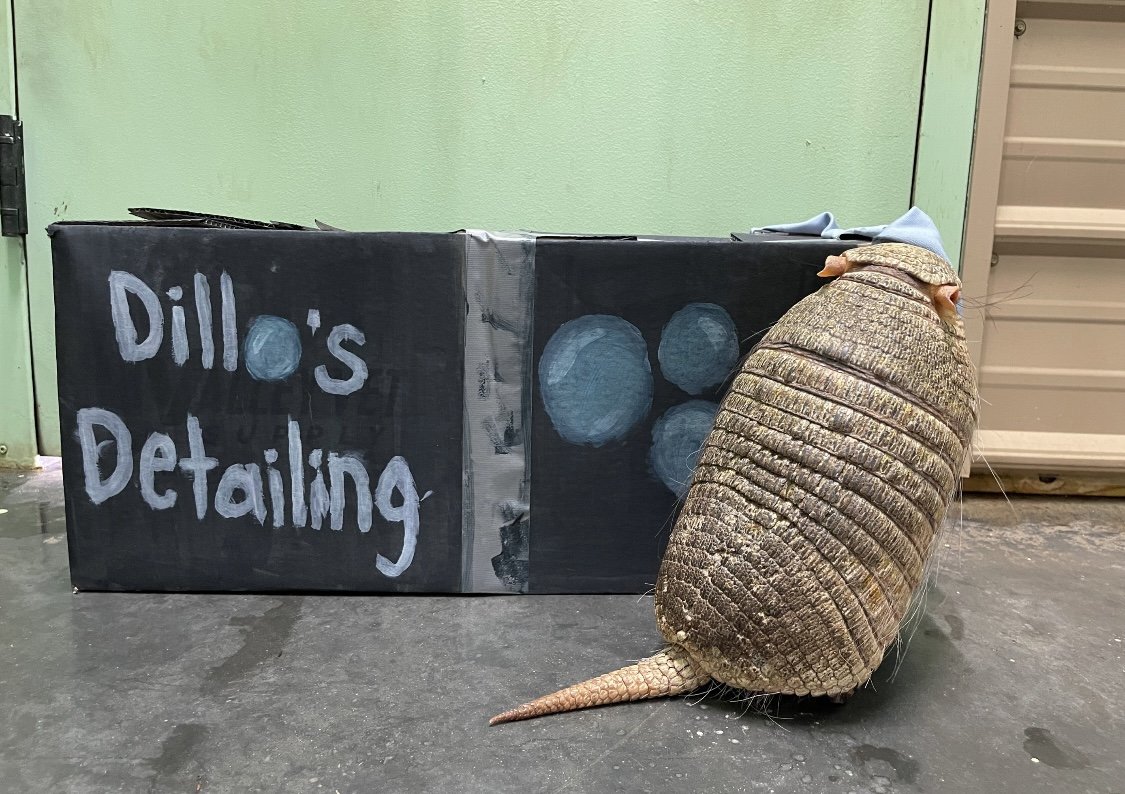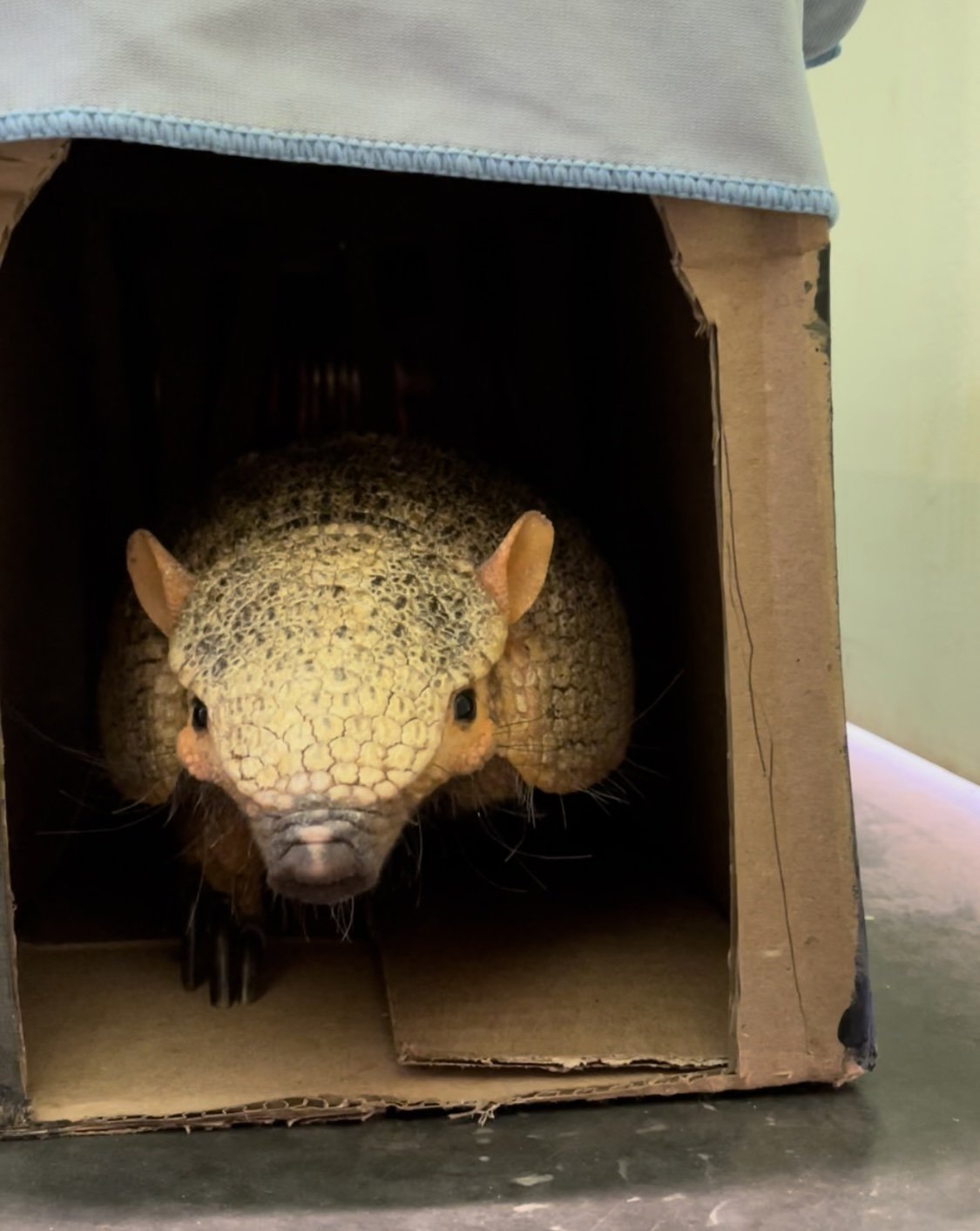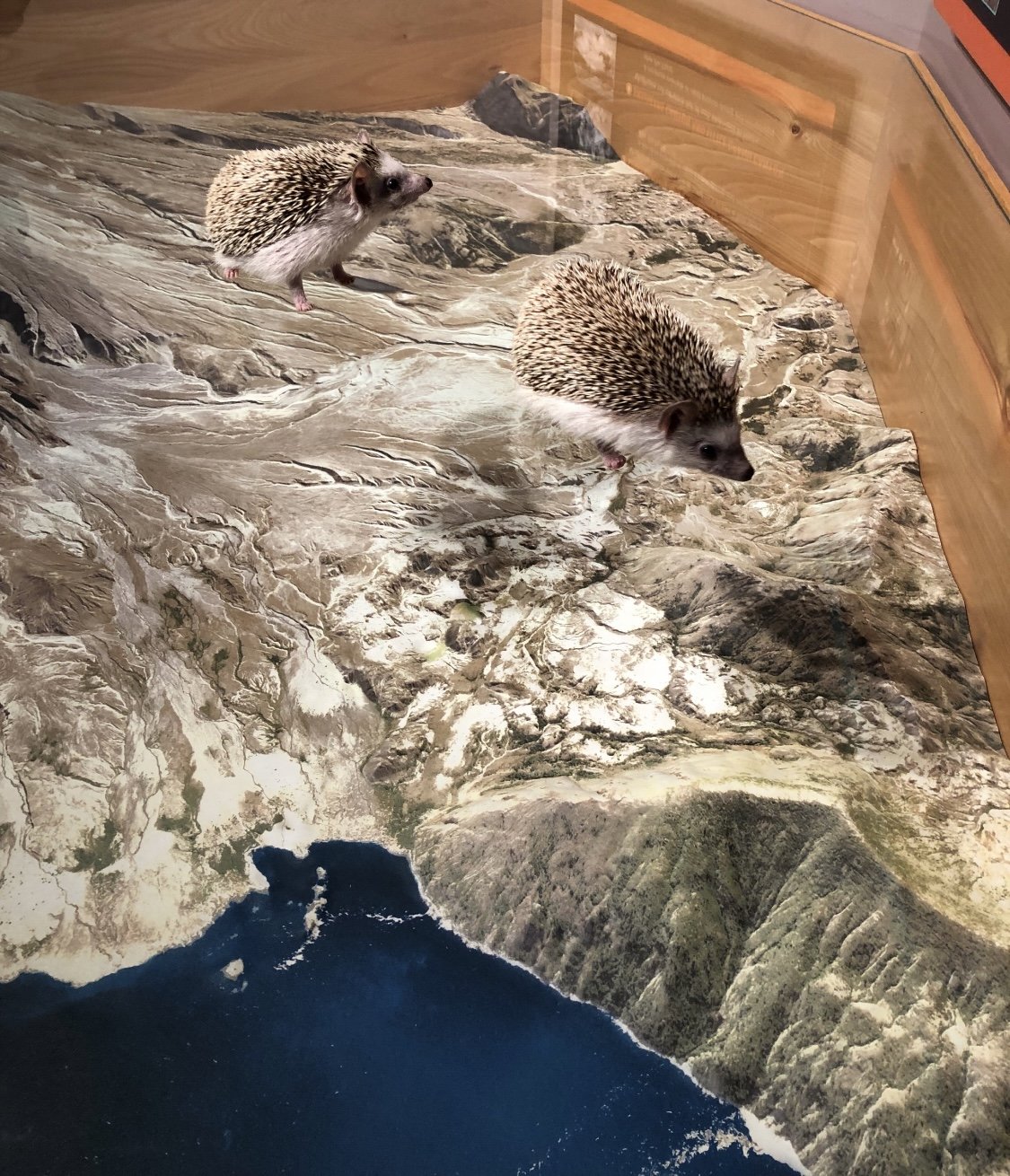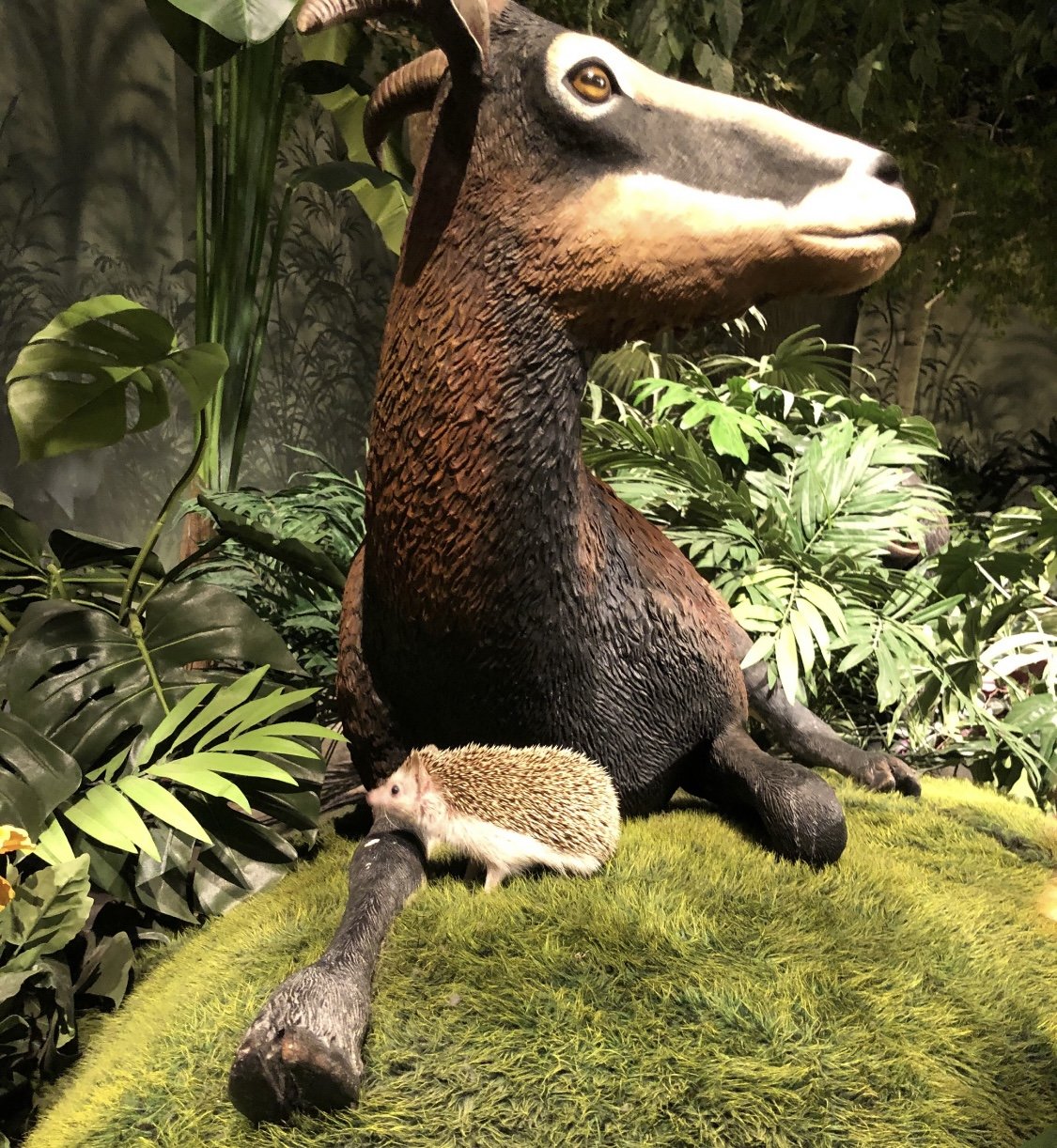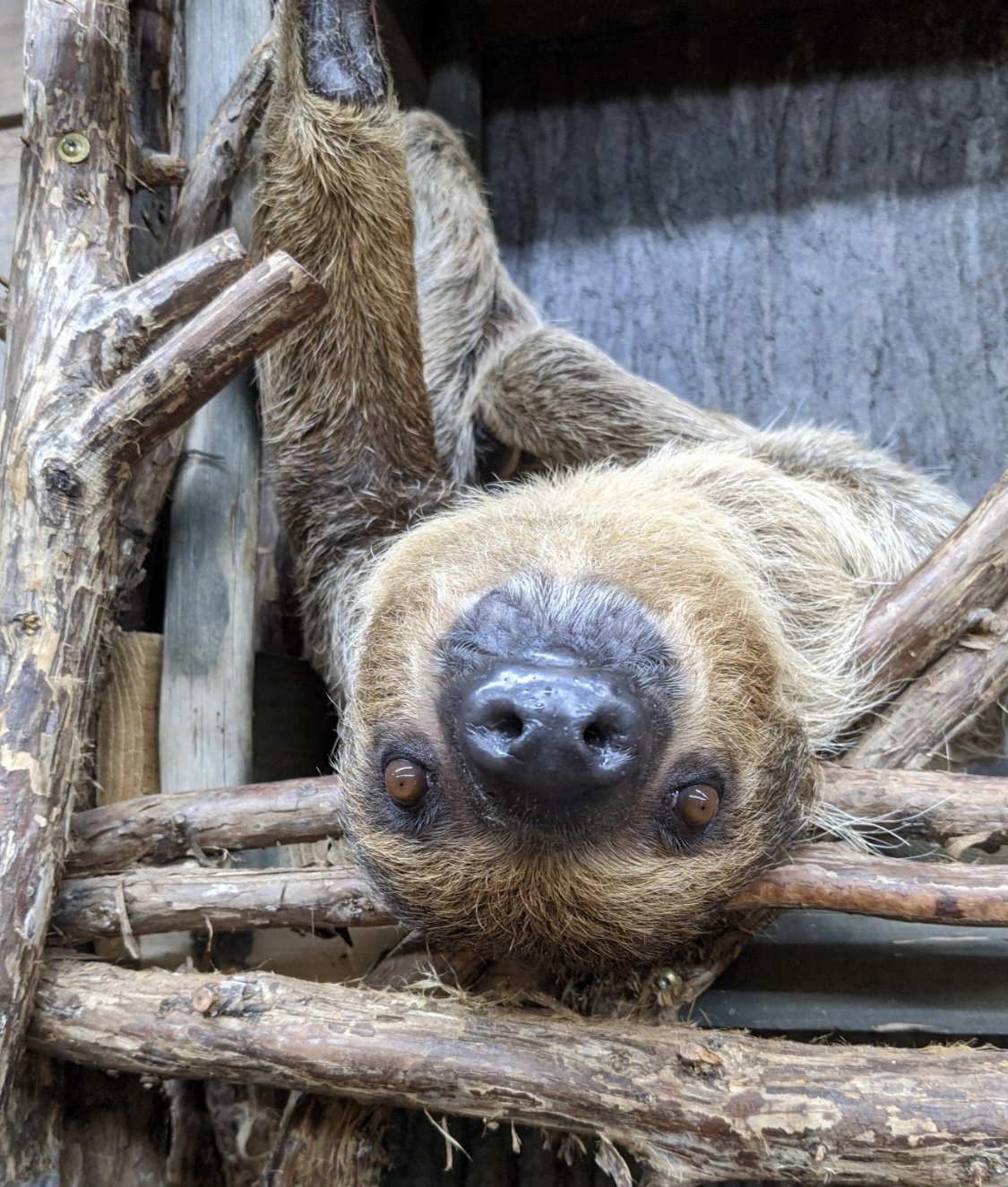Snow Days!
Snowy winter weather has arrived at the zoos of Answers in Genesis. Many people ask us what we do with our animals to keep them safe from the cold. Warm-weather animals like coatis, lemurs, and sloths are kept inside heated indoor housing. Other animals like cranes, kangaroos, and ostriches can withstand some cold, but are taken inside if temperatures get extreme. Finally, some animals are well-adapted to cold weather and love to frolic in the snow, like alpacas, aoudad sheep, and camels. They still have access to heated barns, but they often remain outside. The camels especially love the snow! Many people think camels only live in hot weather. They are actually designed to withstand both extreme heat and extreme cold because deserts can get below freezing at night.
We also celebrated Rikki the binturong’s third birthday, so her keepers threw her a party complete with banners, streamers, and binturong-safe cake. Rikki is one of only 25 Palawan binturongs in United States zoos, so she’s a very special girl. Palawan binturongs are one of nine subspecies of binturongs, also known as “bearcats.” They are neither bears nor cats, but instead belong to the civet created kind. Palawans can be distinguished from the other subspecies by their smaller size, white ear tufts, and more white and gray hair sprinkled in their otherwise black fur. Fun fact: binturongs smell just like buttered popcorn!
Jack the leopard gecko and Lily and Tulip the hedgehogs from the Eden Zoo went on an adventure inside the Creation Museum and explored many of the stunning exhibits throughout the attraction. At the Ararat Ridge Zoo, Esau the hairy armadillo’s keepers made him his very own “car wash!” Since armadillos love to burrow and they can feel through their shells, they wanted to create an interactive toy that encouraged these natural behaviors. Called Dillo’s Detailing, this long cardboard tunnel included different types of brushes and fabric for him to rub his shell on. As you can see, he had a great time!
Finally, Felix the sloth’s trainers taught him to accept nail trims! Sloths have long, curved nails that they use to hang upside-down in trees. Just like humans, sometimes they need their nails trimmed. While trimming a sloth’s nails doesn’t hurt, nail clippers and Dremels (tools that smooth rough edges) can be strange to animals, and Felix wasn’t used to his feet being touched. So how did we train Felix to let us trim his nails? First our trainers began gently touching his feet while feeding him treats like butternut squash, cucumber, and green grapes. Next, they began squeezing individual nails to mimic clipping, again while rewarding him with snacks. Then they brought in the clippers and Dremel so he could investigate them. They began touching his nails with these tools while reinforcing him with food. They also turned the Dremel on and off so he could get used to the noise. Finally, they were able to hold his feet, clip his nails, and Dremel the edges while Felix calmly munched on some snacks. Our trainers turned something that could be stressful into fun for Felix! It’s just another way we live up to our call to be good stewards of God’s creation. Psalm 8:6-9 says, “You have given him (mankind) dominion over the works of your hands; you have put all things under his feet: all sheep and oxen, and also the beasts of the field, the birds of the heavens, and the fish of the sea, whatever passes along the paths of the seas. O Lord, our Lord, how majestic is your name in all the earth!”
- © 2025 Answers in Genesis
- Privacy Policy
- Contact
- About

